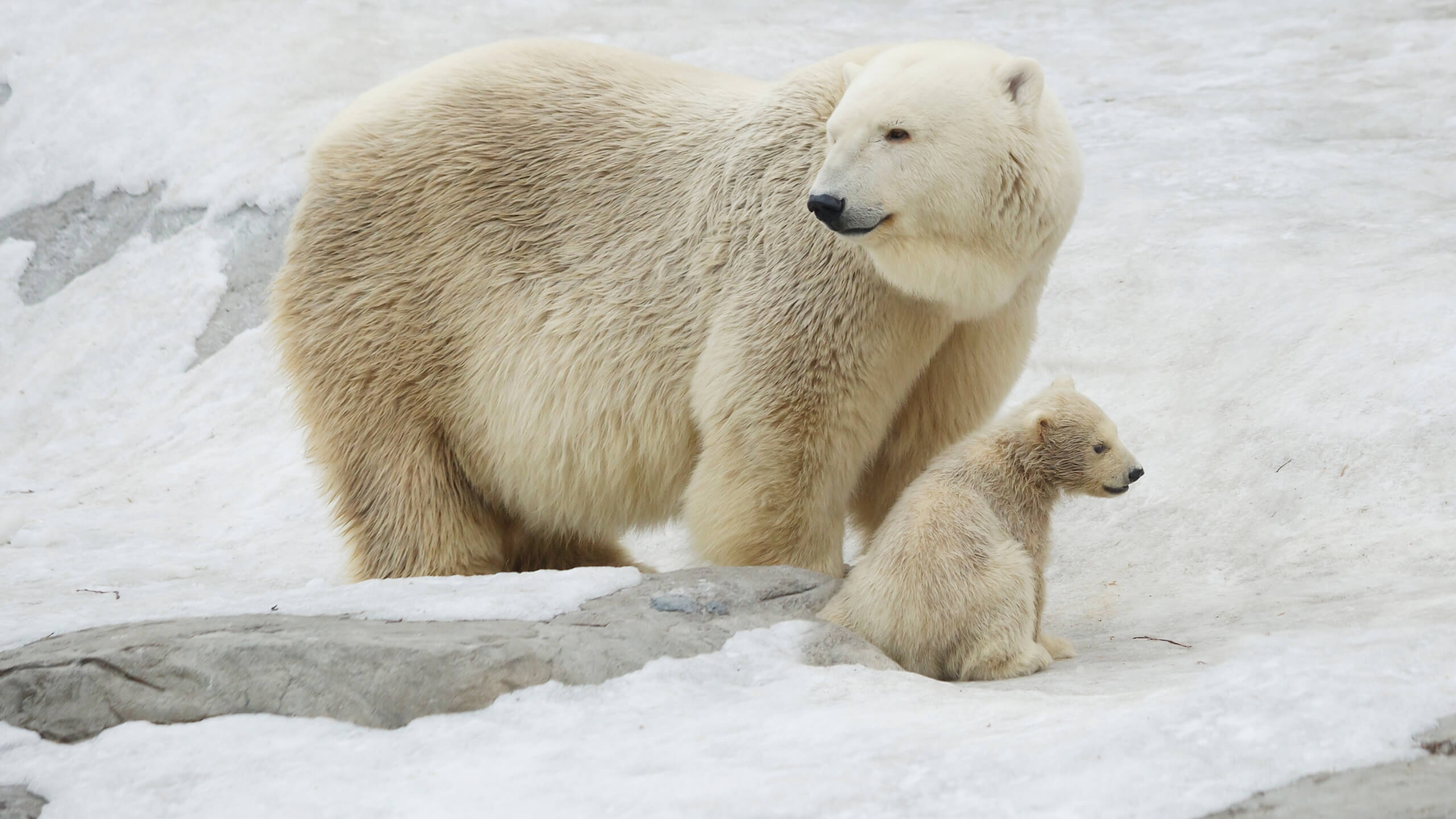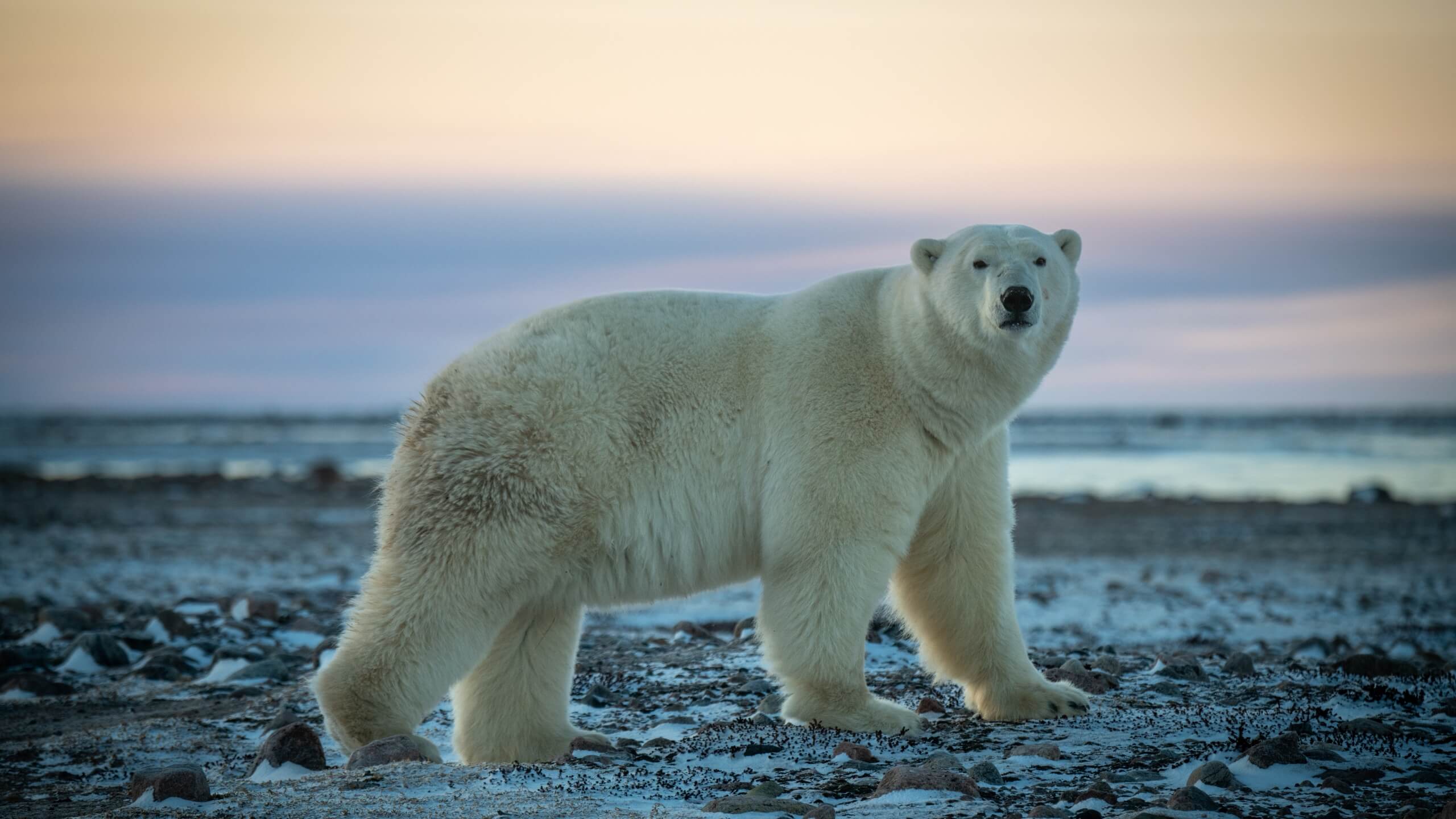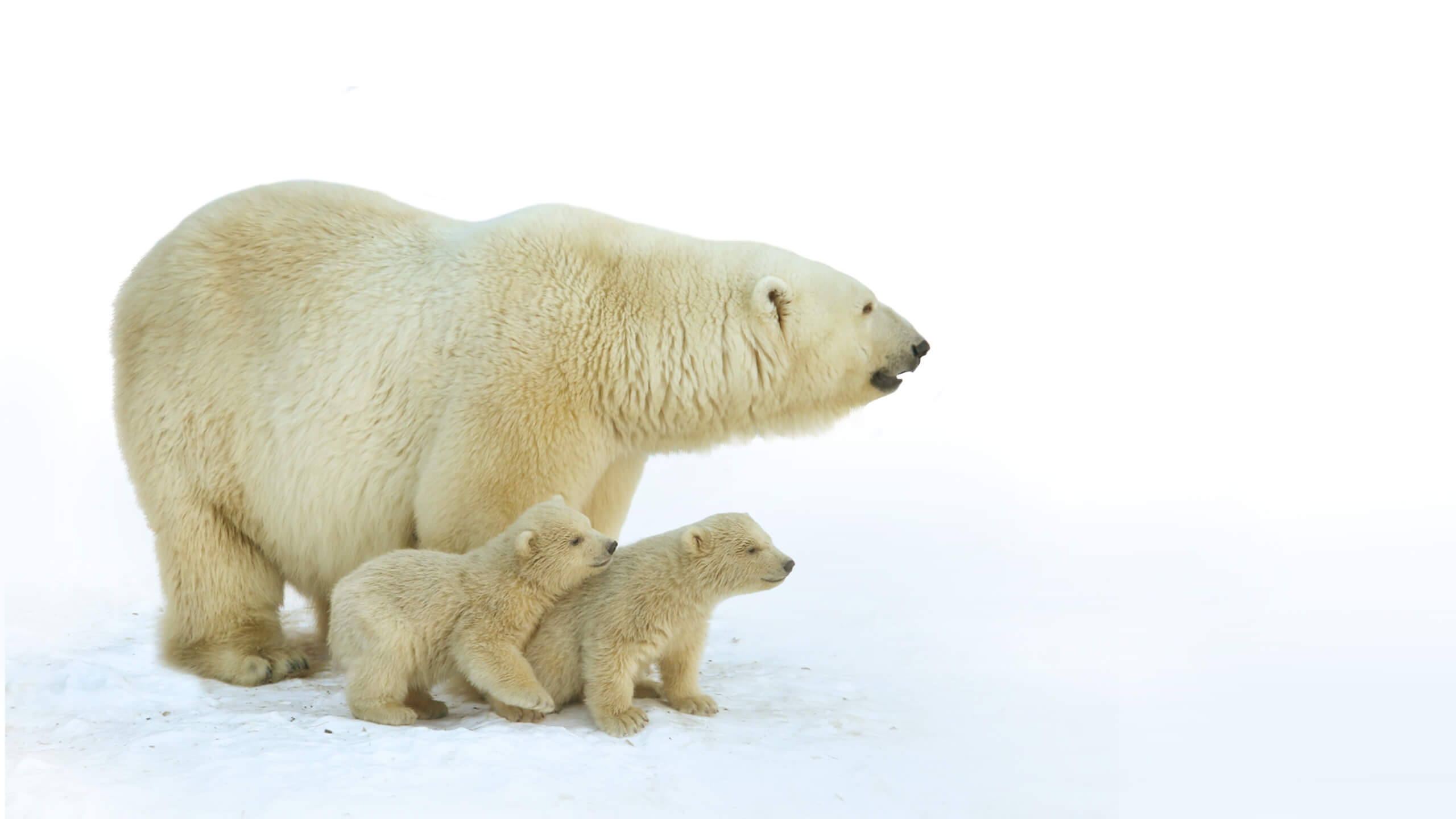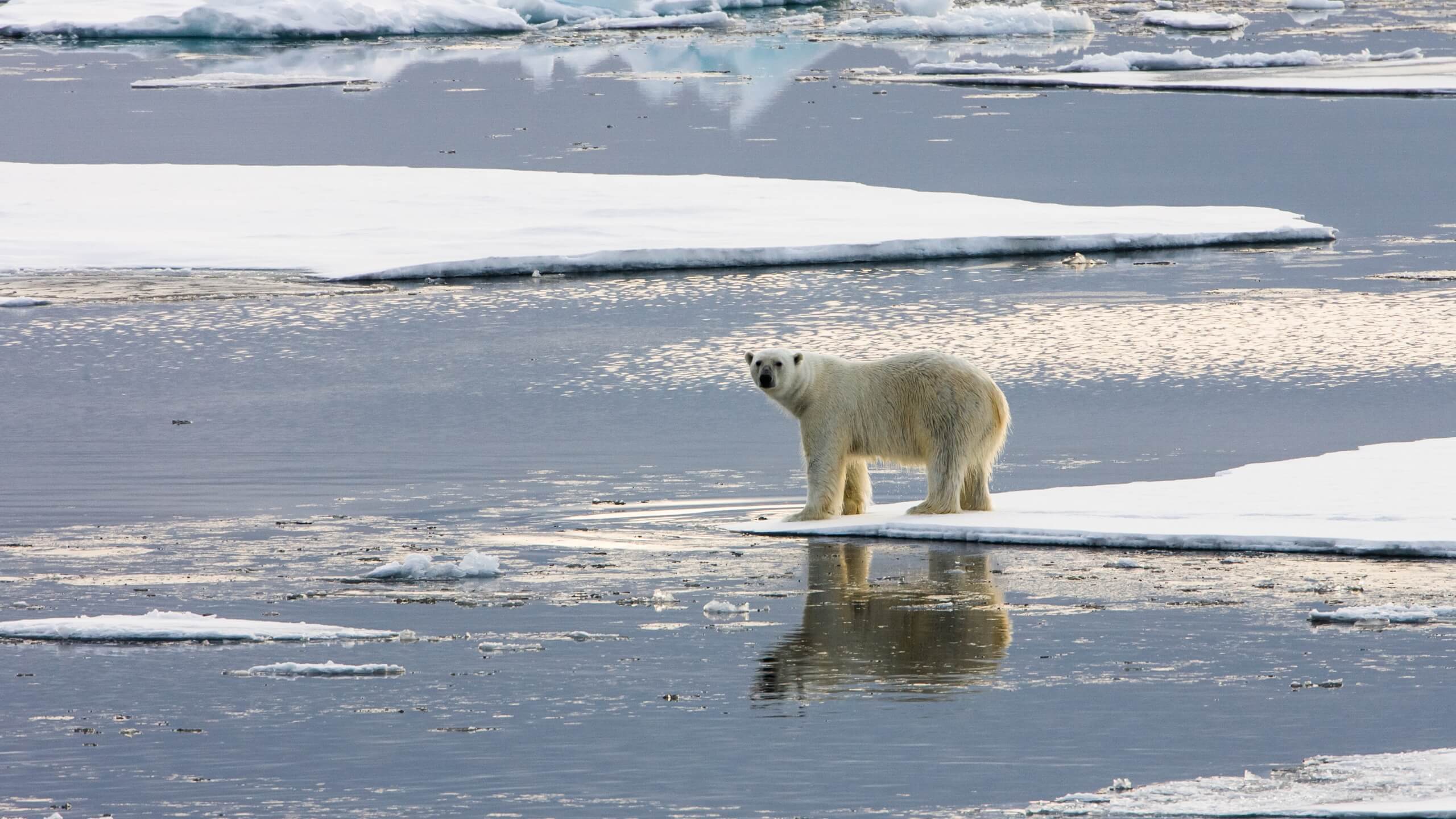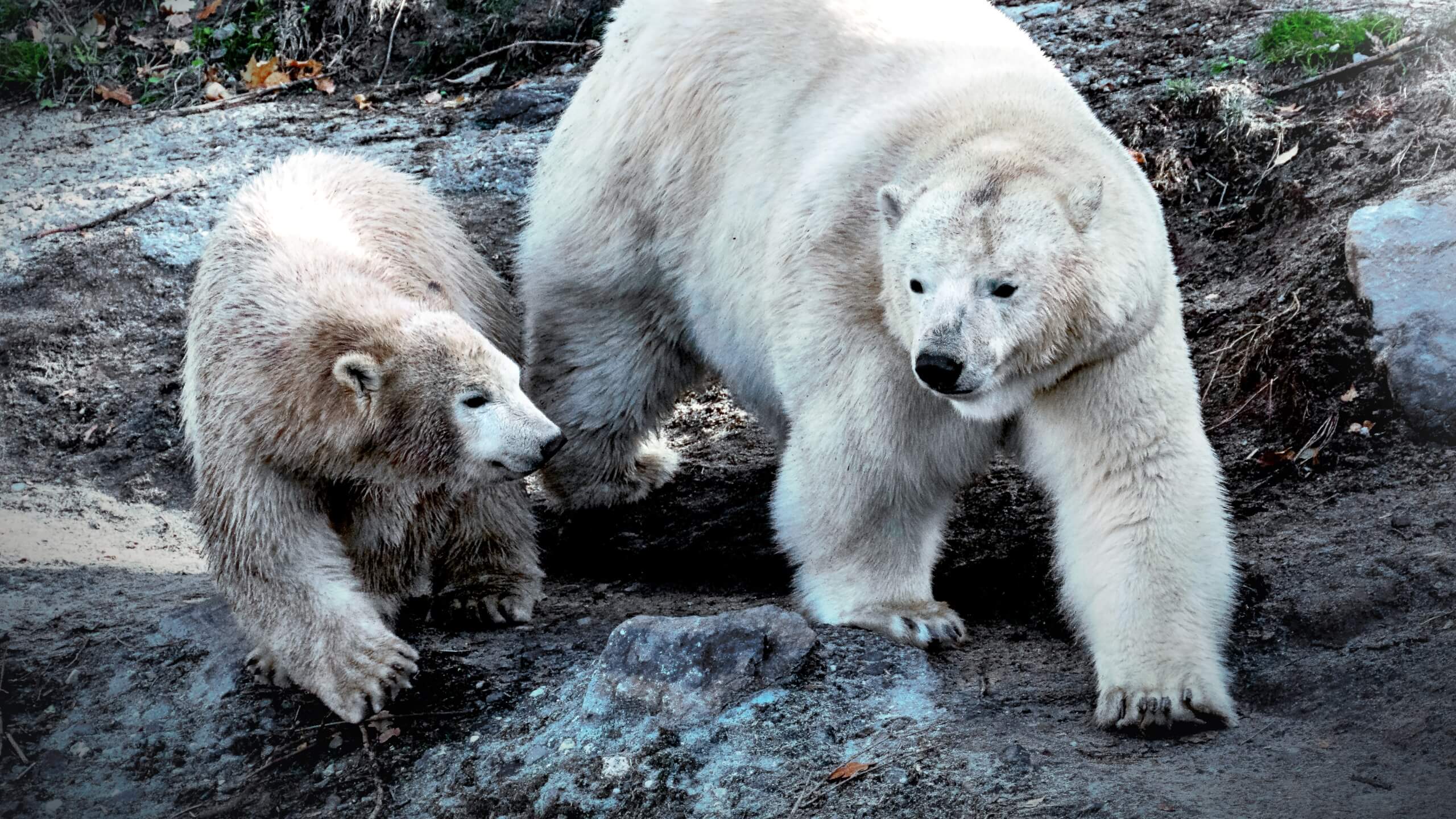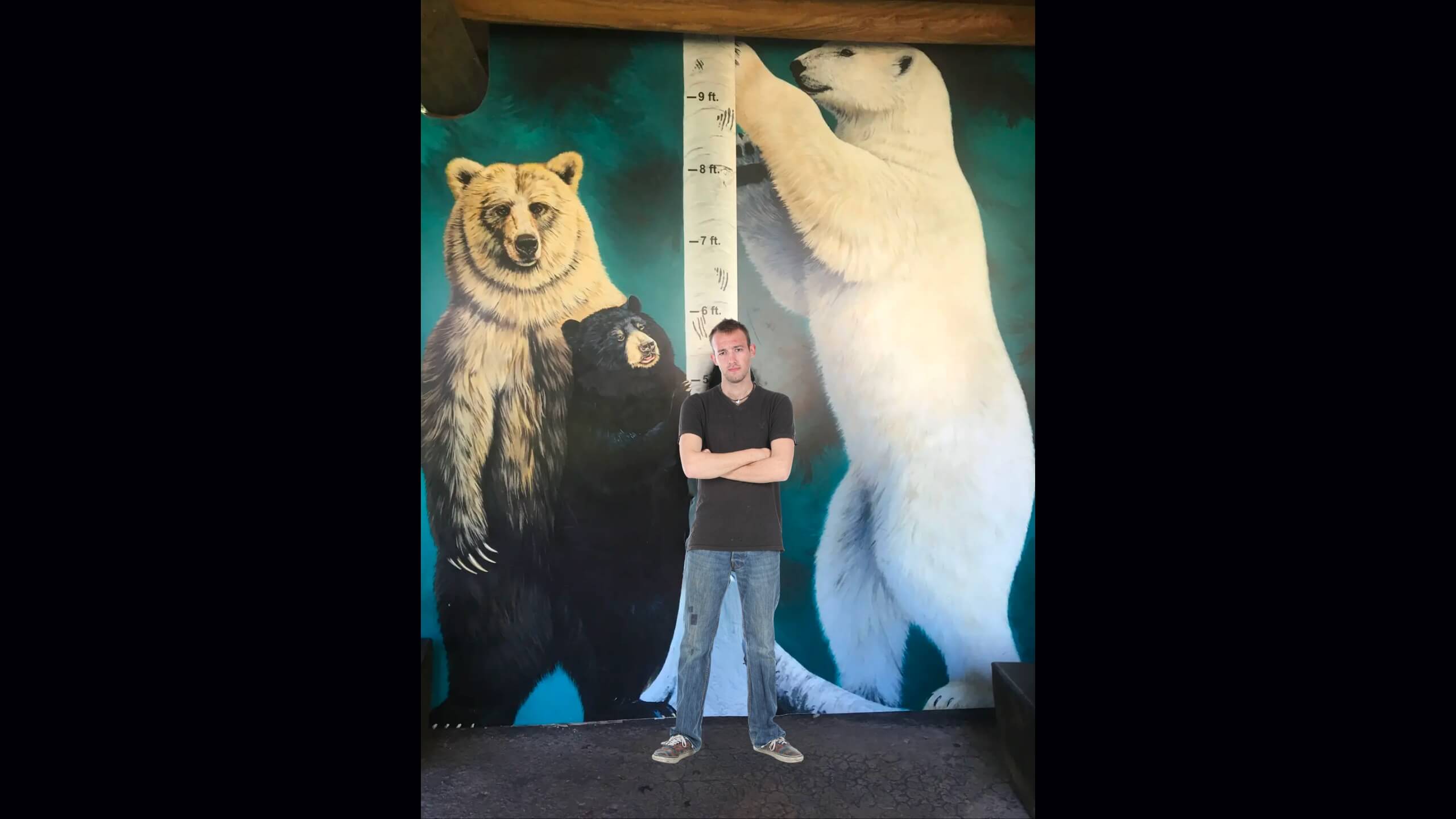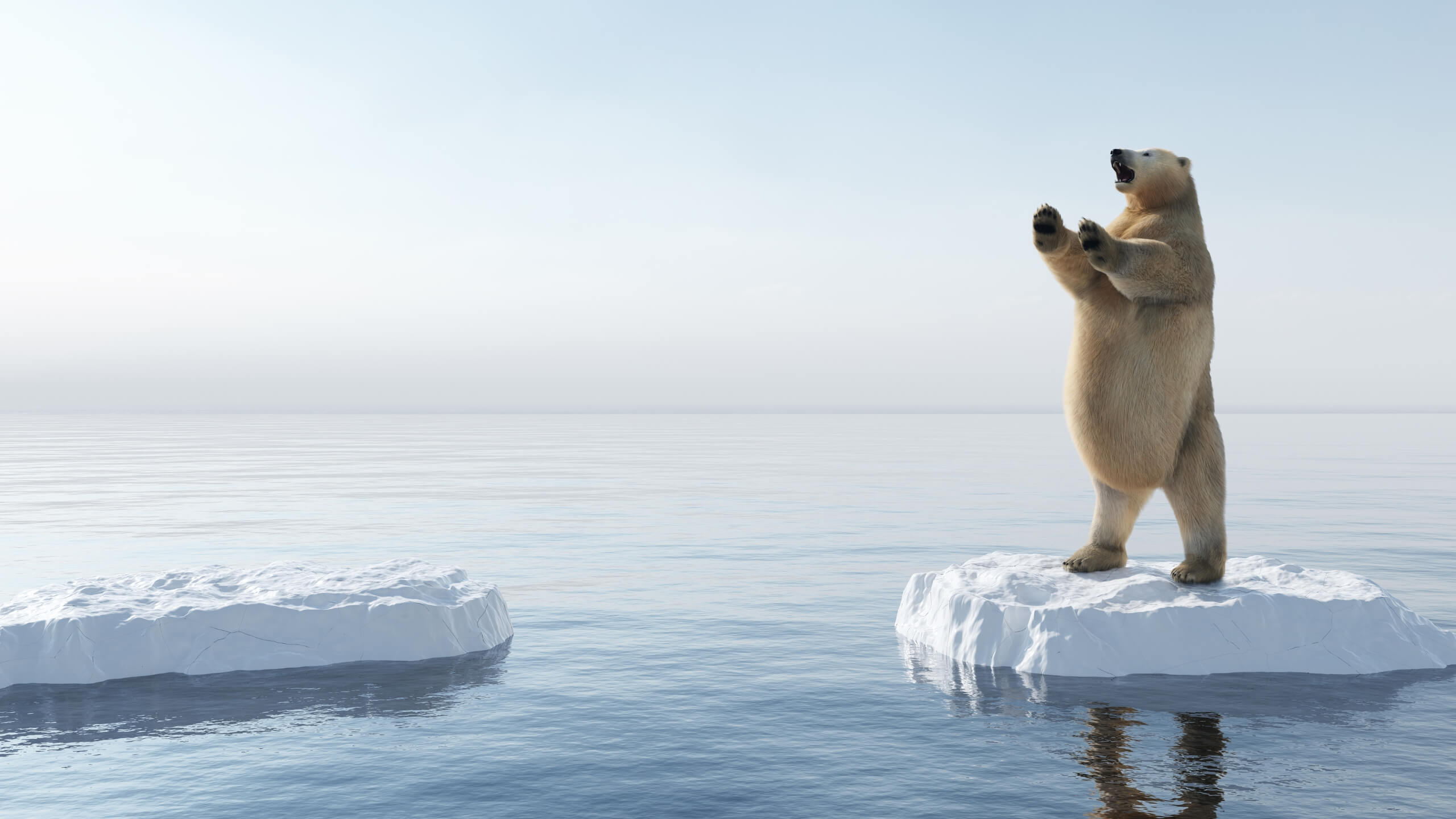The Polar bear is a species of bear indigenous to the Arctic and surrounding regions. It roams the ice sheets of the Arctic and swims in the coastal waters. It is the biggest mammal carnivore on land as well as the largest of all bear species, though Kodiak bears sometimes rival it in size. Here, we gathered information about how big a polar bear is, how much it weighs, what its size is, and its size comparison with other bear species and humans.
How Big Is A Polar Bear?
The polar bear is the biggest of all bear species. The head and body of an adult full-grown polar bear measure from 7.25 to 8 feet. The tail is 3 to 5 inches long. Their average body weight ranges from 900 to 1600 pounds (408 to 725 kg).
While standing on their Hind legs, A polar bear can measure unto 10 feet in length.
The polar bear is a sexually dimorphic species and male individuals are bigger than females. Their body weight also fluctuates with the season. In spring, they eat a lot of food and gain weight because of fat accumulation in their body. Due to fat deposition, their body weight increases by about 50%.
Also Read: How tall is a polar bear?
They store fats beneath their skin in the form of up to 4 inches thick layers of fat tissues and other parts of the body. They use these body fats for insulation and as a food reservoir when enough food is not available in the winter.
How tall is a Polar Bear?
Polar bears are one of the largest land predators in the world. A polar bear stands between 5 to 9 feet tall when it is on all four legs. When standing upright on its hind legs, a polar bear can be up to 10 feet tall.
How Big Is A Baby Polar Bear? – How Big Is A Polar Bear Cub?
A newborn baby polar bear, known as a cub, weighs about 454 to 680 g (16 to 24 oz) and has about 30 cm (12 inches) body length. Baby polar bears are born in a litter that mostly contains two cubs, however, a single cub and triplets are also sometimes born.
The cubs are born tiny (equal to about a men’s shoe in size) and underdeveloped. They can’t open their eyes for a month. They stay with their mother in the maternity den for the first few months where they are fed with the fat-rich milk of their mother (with 33% fat content). At the time when they emerge from the den with their mother, the cubs weigh 10 to 15 kg (22 to 33 pounds).
Also Read: Why are polar bears important to the ecosystem?
At the age of about three to four months, the cubs also start eating solid food (usually seal blubber). Because of eating fat-rich mother milk and blubber, the cubs grow quickly and gain weight of more than 45 kg. They are weaned at the age of 2 to 2.5 years. Females attain sexual maturity at the age of 4 years and males at the age of 6 years. Females reach their adult size at the age of 4 to 5 years and males at about twice that age.
How Much Does A Polar Bear Weigh?
The average body weight of polar bears is 408 to 725 kg ( 900 to 1600 pounds). An adult full-grown male polar bear weighs from 300 to 800 kg (660 to 1,760 pounds). Females weigh from 150 to 300 kg (360 to 660 pounds). As they are sexually dimorphic species, females are smaller than males. The recorded heaviest specimen weighed 1,002 kg (2,209 pounds).
The body weight of polar bears also changes throughout the year. In the spring season, when food is abundant, they consume a lot of food and store energy in their bodies in the form of fats. In that season, their body weight increase by about 50%. A well-fed, fattened, pregnant female can have a body weight of 500 kg (1,100 pounds). In the winter, their body weight gradually decreases because they use their fat reservoirs to fight harsh climate and food scarcity.
How Much Does A Baby Polar Bear Weigh?
At birth, a baby polar bear (known as a cub) weighs about 454 to 680 g (16 to 24 oz). Cubs consume the fat-rich milk of their mother (with 33% fat content) and grow quickly.
At the age of about three months when they emerge from the den with their mother, they usually weigh 10 to 15 kg (22 to 33 pounds). At that time, their body weight can be as low as 3kg (6.6 pounds) and as much as 24.5 kg (54 pounds). At the age of eight months, they gain weight of more than 45 kg (99 pounds).
The body weight of baby polar bears also varies greatly with the number of cubs in the litter. A single cub has more body weight because it gets more care and nutrition (in the form of milk) from the mother. Twins have a normal medium range of body weight. Triplets are not usual. However, in triplets, one cub is usually very small and often does not survive.
What Is The Size Of A Polar Bear?
The average head and body size of adult polar bears ranges from 7.25 to 8 feet. They stand 4.3 to 5.2 feet (130 to 160 cm) tall at the shoulder. Their tail measures 3 to 5 inches.
Because of sexual dimorphism, males have a bigger size than females. The body length of males generally ranges from 6.6 to 8.2 feet (200 to 250 cm) and of females from 5.9 to 6.6 feet (180 to 200 cm). The recorded largest polar bear was 3.39 meters (11 feet 1 inch) tall when standing on its hind legs.
Size Comparison Of Polar Bear With Other Bear Species – Polar Bear Size Vs Other Bears
The polar bear is the biggest of all bear species. Let’s compare it with other bears in size and weight:
| S.No | Bear Species / Subspecies | Average Body Weight | Average Body length |
| 1 | Polar Bear | 408 to 725 kg | 7.25 to 8.0 feet |
| 2 | Grizzly Bear | 362.8 kg | 6.5 to 7.8 feet |
| 3 | Kodiak Bear | 270 to 640 kg | Around 8 feet |
| 4 | Black Bear | 90 to 272 kg | 5 to 6 feet |
Polar Bear Vs Grizzly Bear
Grizzly bears are a subspecies or population of brown bears native to North America. It has an average body weight of 362.8 kg (800 pounds) and a body size of 6.5 to 7.8 feet. It is smaller than the average 408 to 725 kg ( 900 to 1600 pounds) weight and 7.25 to 8 feet size of polar bear.
Polar Bear Vs Kodiak Bear
Kodiak bear is another subspecies of brown bear that inhabit Kodiak Island and coastal Alaska. The average body weight of an adult male Kodiak bear is 270 to 640 kg, which is close to the polar bear’s 408 to 725 kg average body weight. Kodiak bears compete in weight and size with polar bears.
Polar Bear Vs Black Bear
The black bear is a species of bear native to North America. Adult black bears have an average body weight of 90 to 272 kg (200 to 600 pounds) and a body length of 5 to 6 feet. It is much smaller than the average 408 to 725 kg ( 900 to 1600 pounds) body weight and 7.25 to 8 feet body length of polar bears.
Size Comparison Of Polar Bear With Humans – Polar Bear Size Vs Human – How Big Is A Polar Bear Compared To Humans?
An adult male polar bear stands 8 to 10 feet tall and has an average body weight of 408 to 725 kg ( 900 to 1600 pounds). While an adult male human has an average height of 5.9 feet and weighs 90 kg (198 pounds).
It shows that an adult male is about 1.5 times taller and over 5 times heavier than an adult male human.
How Big Do Polar Bears Get? – Largest Polar Bear Ever Recorded
The recorded biggest polar bear was a male specimen shot in 1960, in Kotzebue Sound, Alaska. It weighed 1,002 kg (2,209 pounds) and measured 3.39 meters (11 feet 1 inch) tall when standing on its hind legs.

